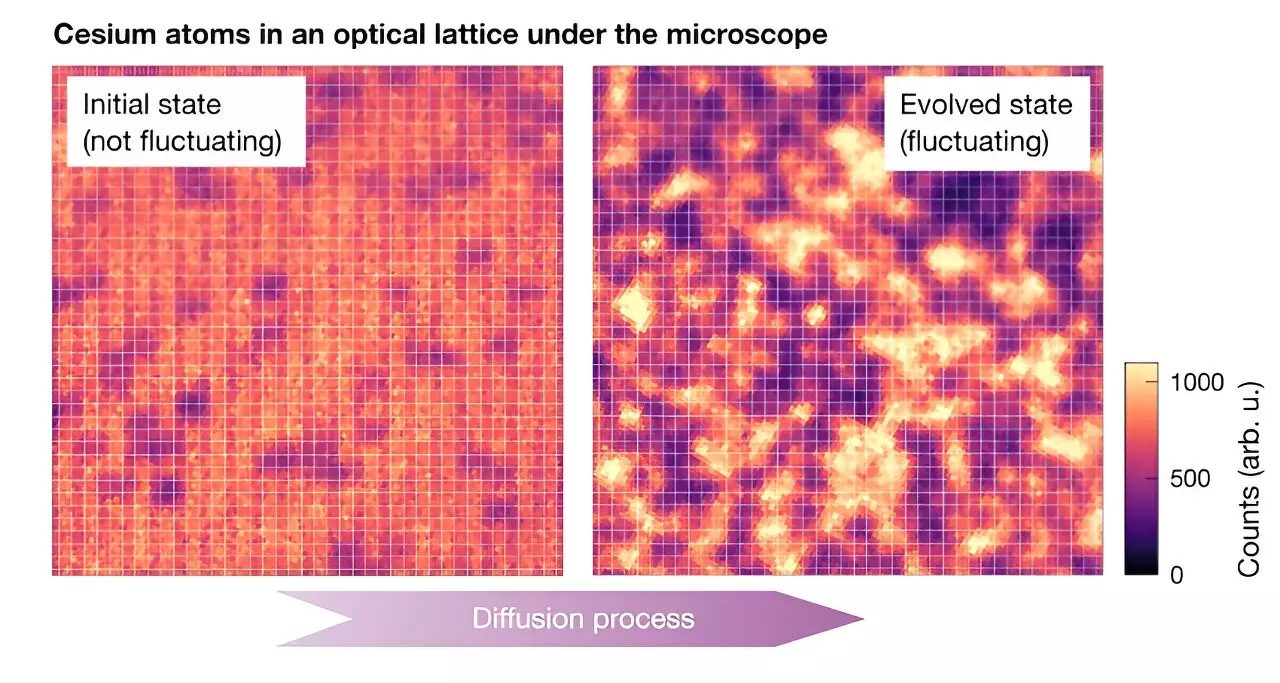The landscape of quantum physics is continually evolving, driven by groundbreaking research that sheds light on the intricacies of quantum mechanics. A recent study conducted by researchers from Ludwig-Maximilians-Universität, Max-Planck-Institut für Quantenoptik, the Munich Center for Quantum Science and Technology (MCQST), and the University of Massachusetts marks a significant contribution to the understanding of equilibrium fluctuations within large quantum systems. Published in *Nature Physics*, this study employs advanced quantum simulations facilitated by a sophisticated quantum gas microscope, a tool adept at imaging and manipulating individual atoms in ultracold gases. The findings challenge existing paradigms and propose innovative theoretical frameworks for understanding chaotic quantum systems.
Julian Wienand, a co-author of the published paper, elucidates the inherent complexities in predicting the behavior of large particle systems. The goal is to simulate a scenario where numerous particles are confined within a box, each subject to distinct initial conditions and interactions. While theoretically feasible, executing such simulations is fraught with computational challenges due to the exponential scaling of complexity with increasing particle numbers. As a solution, researchers are gravitating toward hydrodynamics—a theoretical structure that can offer a more manageable approach to simulating large systems.
This application of hydrodynamics becomes particularly relevant when dealing with chaotic systems, characterized by their unpredictable behavior. An assumption is made that, under chaos, local thermal equilibrium is established among particles, which allows for the simplification of the model. Particles are treated as part of a continuous density field governed by differential equations, providing a macroscopic snapshot of the particles’ behavior without the need for tracking every single interaction.
Fluctuating hydrodynamics (FHD) emerges as an extension of classical hydrodynamics, adept at incorporating both thermal fluctuations and microscale spatial variations. The inclusion of these fluctuations, perceived as random perturbations akin to white noise, broadens the applicability of hydrodynamic models, permitting researchers to gain insights into the complex interplay of particle dynamics.
According to Wienand, the crux of FHD lies in its capacity to connect seemingly disparate microscopic and macroscopic behaviors of quantum systems. It posits that the evolution of these complex systems is ultimately tethered to a handful of key quantities, notably the diffusion constant. While FHD has already been leveraged to analyze classical systems effectively, its potential applicability to quantum systems was largely unexplored prior to this research.
The experimental approach adopted by Wienand and his colleagues involved utilizing a cesium (Cs) quantum gas microscope to conduct their simulations. The researchers created a controlled environment by trapping ultracold cesium atoms within an optical lattice, allowing for meticulous observation of quantum many-body systems. This setup granted them the capability to capture images with single-site resolution, enabling deterministic mapping of occupied and unoccupied lattice sites. Such precise measurements are indispensable for investigating particle statistics and fluctuation patterns.
The team crafted their experimental system by transitioning cesium atoms into a meticulously prepared excited state. By subsequently modifying the depth of the optical lattice, the movement of atoms was facilitated, setting the stage for a diffusion process characteristic of thermalization. Through this dynamic process, fluctuations were analyzed over time, revealing essential data pertaining to the growth and evolution of these fluctuations.
The findings from this remarkable study establish the validity of FHD theory in the context of chaotic quantum systems, presenting a unique opportunity to extrapolate essential macroscopic behavior from complex microscopic dynamics. The researchers posit that despite the chaos observed at a microscopic level, the resulting macroscopic properties can be surprisingly straightforward, governed primarily by a singular diffusion constant. This revelation is not only groundbreaking for theoretical physics but also sets the stage for further explorations into complex quantum phenomena.
Furthermore, the integration of equilibrium and out-of-equilibrium analyses in FHD reveals an intriguing relationship that underscores the versatility of the model. Despite measuring systems in non-equilibrium states, the diffusion constant—considered an equilibrium property—can still be extracted and understood within this framework, paving the way for elucidating the underlying mechanisms of quantum many-body dynamics.
With new questions emerging from their recent findings, Wienand and his team are poised to delve further into the world of quantum fluctuations. Upcoming research aims to dissect the behavior of fluctuations in systems resisting thermalization and to explore higher-order statistical moments such as skewness and kurtosis. Additionally, adapting FHD to accommodate more complex observables could yield sophisticated insights into exotic quantum systems.
This pioneering study not only enriches the theoretical fabric of quantum physics but also provides a fresh lens through which researchers can understand the intricate ballet of particles in chaotic systems. Through continued exploration and refinement, the tools and concepts developed from this research may illuminate further facets of the enigmatic quantum realm.

